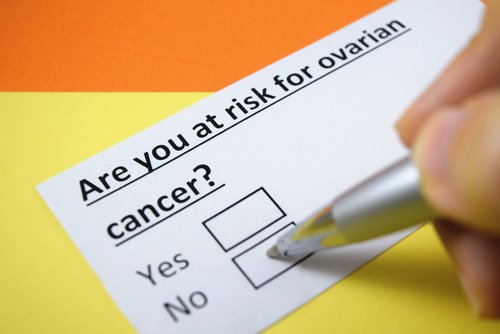This post was originally published on this site
Women who require assisted reproductive technology to become mothers are not more likely to develop ovarian cancer, except for those with endometriosis, a new study suggests.
The study, “Assisted reproductive technology treatment and risk of ovarian cancer—a nationwide population-based cohort study,” was published in the journal Human Reproduction.
Assisted reproductive technology (ART), like in vitro fertilization (IVF), involves medical interventions intended to facilitate conception. The treatment also involves a step called ovarian stimulation, in which women take medication to make many mature eggs at one time. Whether this raises the risk of ovarian cancer is still unclear, with previous studies yielding conflicting results.
For greater clarity, researchers analyzed data from Danish national health registers, including the Danish IVF Register and the Danish Cancer Register. They gathered data on 58,472 women who used ART — with procedures including ovarian stimulation — between 1994 and 2015, and compared findings to 625,330 age-matched women with no history of ART treatment.
Results showed that the ART group was relatively more educated, more likely to be married or living with a partner, and less likely to have given birth previously.
Over a follow-up period of almost 10 years, 64 (0.11%) individuals in the ART group were diagnosed with ovarian cancer, as were 329 (0.06%) in the non-ART group.
Overall, and after adjusting for possible confounding factors like education, partnership status, and number of children, the ART group had a 20% higher risk of ovarian cancer — a statistically significant difference.
This risk was highest in the first two years following ART, peaking at a 24% increase in ovarian cancer risk, but it diminished over time. By 12 years after an assisted reproductive course, ovarian cancer risk in the ART group was not statistically different from that of the non-ART group.
The researchers speculated that this may be because, during ART treatment, ovarian ultrasounds are routinely performed, so it’s possible that cancers are detected that might otherwise not be. They also acknowledged that routine examinations might contribute, at least in some small part, to the overall higher ovarian cancer rate in the ART group.
However, “the risk of ovarian cancer after ART treatment differed substantially according to the cause of infertility,” the researchers noted.
In individuals with female factor infertility — that is, difficulty in conceiving due to something in the women, as opposed to her male partner — ovarian cancer risk rose by 36%. As in the overall group, this risk decreased with time following ART.
In contrast, those who sought ART due to male factor infertility, or due to infertility without a clear cause, did not have a statistically greater risk of ovarian cancer.
Women with endometriosis who were treated with ART were nearly four times more likely to be diagnosed with ovarian cancer. Polycystic ovarian syndrome and other causes of female infertility were not associated with a significant increase in ovarian cancer risk following use of ART.
“[A] strong association with ART and ovarian cancer was observed in women with endometriosis,” the researchers wrote. “Our results support that the underlying infertility is the causal factor for the increased risk of ovarian cancer in women who have undergone ART and not the ART procedure per se.”
They suggested that this finding might explain conflicting results seen in previous studies, noting that “[i]n most previous studies the cause of infertility was not included in the analyses.”
This study was not designed to identify cause-and-effect relationships; this conclusion is what the researchers considered to be the most likely option.
The researchers also acknowledged other limitations of this study, including the fact that they were unable to account for obesity or the use of hormonal birth control, which have been shown to increase and decrease ovarian cancer risk, respectively. Further studies are needed to determine whether ART might increase ovarian cancer risk specifically in women with certain infertility-causing conditions, particularly endometriosis, they added.
The post Ovarian Cancer Risk in Fertility Assistance Rises Mainly for Women with Endometriosis, Study Suggests appeared first on Ovarian Cancer News Today.
The post Ovarian Cancer Risk in Fertility Assistance Rises Mainly for Women with Endometriosis, Study Suggests appeared first on BioNewsFeeds.


